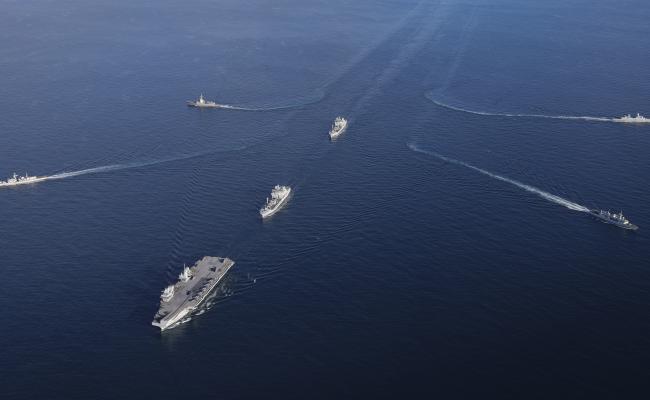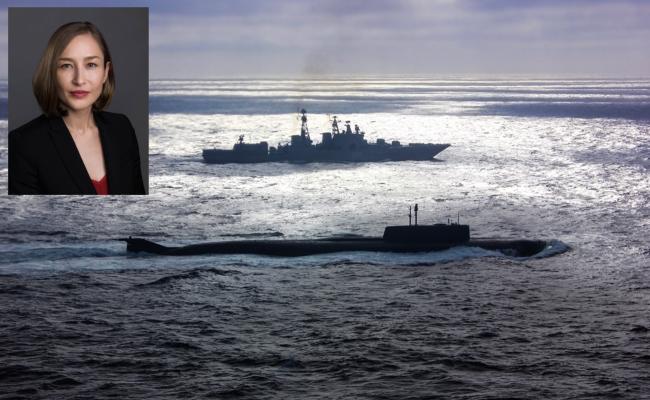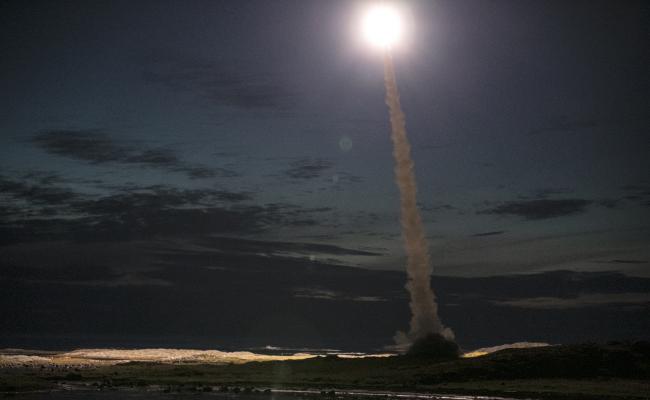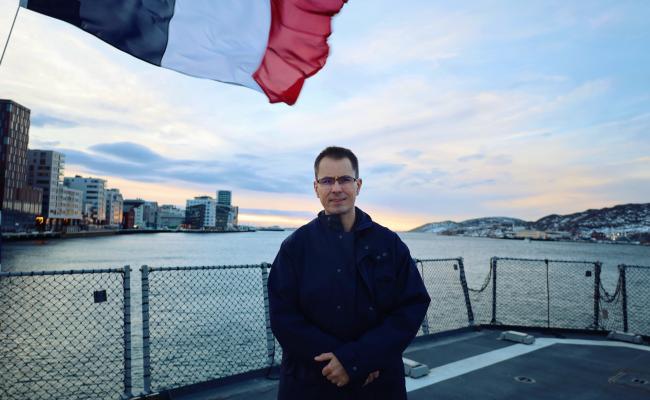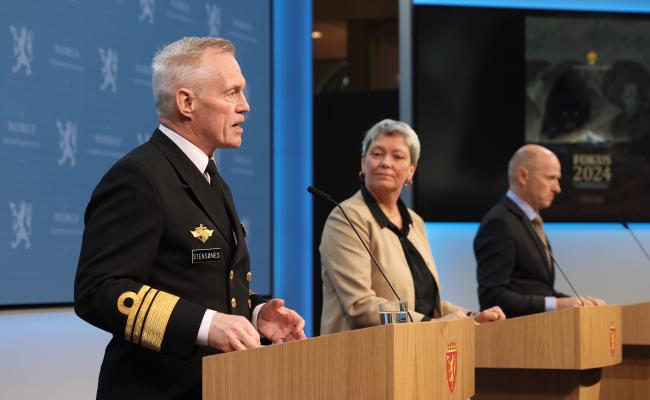Norway’s Navy Chief: ‘High North, Low Tension’ Depends on Our Own Capability At Sea

The Norwegian Navy Chief, Rear Admiral Oliver Berdal, aboard the frigate KNM Fridtjof Nansen during the Arctic Dolphin exercise in February. This annual event in Norway focuses on educating submarine commanders and conducting anti-submarine warfare. The latest edition also included important training for this winter's major military exercise activity in the North at sea, in the air, and on land – in the form of the closely integrated Joint Warrior and Nordic Response. (Photo: Ørjan Andreassen / the Norwegian Armed Forces)
Norway’s government recently launched major investments in the country's naval forces. This will increase important Norwegian presence in the North vis-á-vis Russia, maintains Navy Chief Oliver Berdal. “We must be able to safeguard our maritime interests on an independent basis,” he says.
The Navy is a high priority in the Norwegian government's proposal for a new long-term defense plan.
The proposed investments respond quite well to the need for a maritime initiative to increase operational ability, particularly in northern waters, believes Norway's Navy Chief, Rear Admiral Oliver Berdal.
“The government's proposes a significant strengthening of the Navy. The fleet will be modernized and renewed, increasing the number of vessels. This will enhance presence along the world's second longest coastline and in the large and important surrounding ocean areas," says Berdal to High North News.
"The majority of today's patrol operations, with Coast Guard vessels, for example, is in the North. This will continue, and with a gradually increased number of vessels in both the Coast Guard and the Navy, we will have an even better presence and situational awareness."
Proposed strengthening of the Norwegian Navy
– Five frigates able to carry anti-submarine warfare helicopters.
– Up to ten large and eighteen smaller standardized surface vessels for the Navy and the Coast Guard.
– At least five new submarines. Four submarines have been purchased and are currently under construction in Germany, scheduled to be delivered in 2029. The government recommends acquiring an extra submarine, with an option on yet another.
– An upgrade of the Coastal Ranger Command, including five new high-speed vessels.
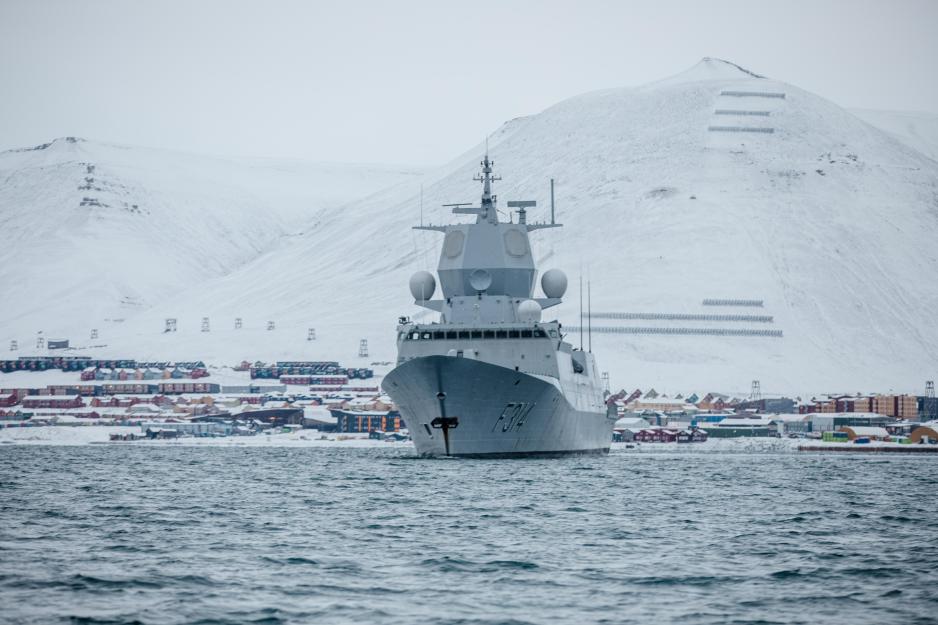
Every year, the Norwegian Navy sends a frigate to the Svalbard archipelago in the Arctic Ocean to assert Norwegian sovereignty and show presence. Here is KNM Thor Heyerdahl just outside Longyearbyen during such a mission in 2021. (Photo: Helene Synes / the Norwegian Navy)
A deterrent effect
Norway and Russia share a maritime border in the Barents Sea and the Arctic Ocean.
These waters are areas of responsibility of the Russian Northern Fleet, which has been given increased significance and new submarines.
This happens in the wake of Russia's warfare against Ukraine and measures concerning the development the Northern Sea Route, as well as NATO's expansion in the Nordic region (including the Baltic Sea area).
Can you say something about the significance of enhanced Norwegian maritime capacities compared to the strengthening of the Northern Fleet?
"The government's proposal to acquire more submarines – which are among the most impactful and deterrent weapon systems we have – as well as acquiring at least five new frigates, is very positive to our ability to defend ourselves," maintains the Navy chief and continues:
"Russia is about to renew its entire fleet, from submarines to surface vessels. Given the exacerbated security policy situation, it is incredibly important that Norway has maritime capacities that can contribute to safeguarding Norway and NATO's interests in the North."
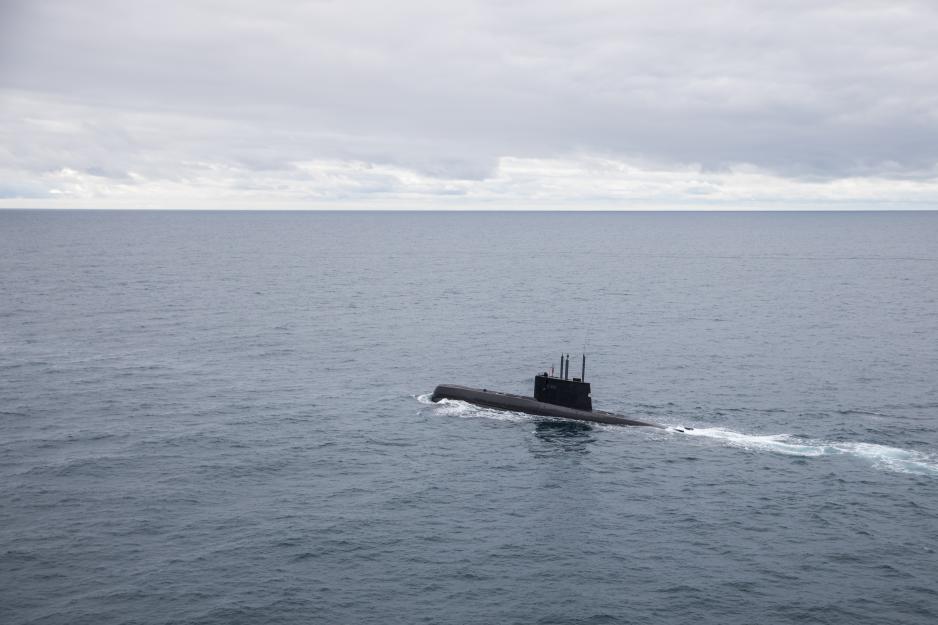
KNM Uredd, one of Norway's six submarines. Here it is in action during a previous edition of Dynamic Mongoose, NATO's annual exercise in advanced (anti)submarine warfare in the High North, with submarines, surface vessels, and maritime patrol aircraft. The 2024 edition of the exercise will occur off the Norwegian coast from April 29th to May 10th. (Photo: Jakob Østheim / the Norwegian Armed Forces)
Norway's naval capacities as of today
– The Navy: 4 frigates, 6 submarines, 6 corvettes, 5 minesweeping vessels, the Coastal Ranger Command, the Norwegian Naval EOD Command, the Fleet Logistics Commando, and 3 logistics and support vessels.
– The Coast Guard: 14 vessels in total. A) Outer coast guard with 1 vessel of the Svalbard class, 2 newly arrived vessels of the Jan Mayen class (with another one on the way), 3 vessels of the Barents Sea class, 1 vessel of the Harstad class, as well as 2 anchor handling tug supply vessels; B) Inner coast guard with 5 vessels of the Nornen class.
Significant with regard to tension
What significance does it have that Norway itself can take more responsibility for maritime operations in the High North, rather than an increased need for presence being solved by allies?
"Norway is Russia's closest neighbor in northern waters and operates in the same ocean areas. We must be able to safeguard our maritime interests on an independent basis, while at the same time being able to operate together with allies," says Rear Admiral Berdal and continues:
"Patroling with Norwegian coast guard and navy vessels in the Barents Sea is completely natural and necessary. If we had to leave this form of patroling mostly to others, it could create a poorer situational awareness and challenges that go against the low tension we desire in the High North."
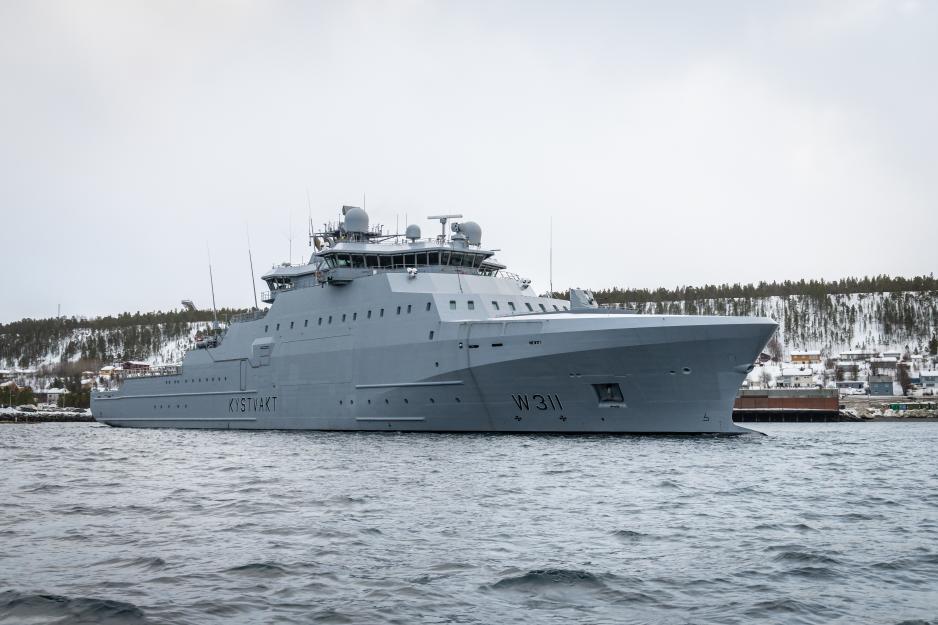
KV Bjørnøya, Norway's newest Coast Guard vessel, outside Alta in Finnmark, Northern Norway, during the Nordic Response exercise in March. It was delivered to the Navy in November and is the second of three new Coast Guard vessels of the Jan Mayen class, which will protect Norwegian interests in the High North. (Photo: Kristian Kapelrud / the Norwegian Armed Forces)
Open direct line
In this context, it is an important point that the Norwegian Joint Headquarters (NJHQ) and the Russian Northern Fleet to have a communications channel to avoid misunderstandings and unintentional escalation.
This direct line is still open, confirms the Spokesperson for the NJHQ, Corporal Jonny Karlsen, to High North News.
The new chiefs of the two military headquarters – respectively Vice Admiral Rune Andersen (who took office in November) and Vice Admiral Konstantin Kabantsov (who took office in March) – have also communicated.
"There has been no physical contact, but correspondence via letters," says Karlsen.
He also informs the following about the use of the channel:
"Weekly system checks occur on Skype between the NJHQ and the Northern Fleet. In addition, there has been sporadic correspondence via letters or e-mail between the headquarters at Reitan, Northern Norway, and in Severomorsk, Northwest Russia."
"As known, military cooperation with Russia has been stopped. The communications channel between the military headquarters is kept open to ensure the security of our airmen and sailors as they operate in the same area," Karlsen specifies.
The Norwegian Chief of Defense' Consideration
"The modernization of the Norwegian Navy's surface structure is central to our defense capability. The new fleet plan provides a long-term perspective and predictability for the development of the Navy. Standardization will provide increased availability and more efficient maintenance of new vessels," states Norway's Chief of Defense, General Eirik Kristoffersen, in a comment on the government's proposal for a new long-term defense plan.
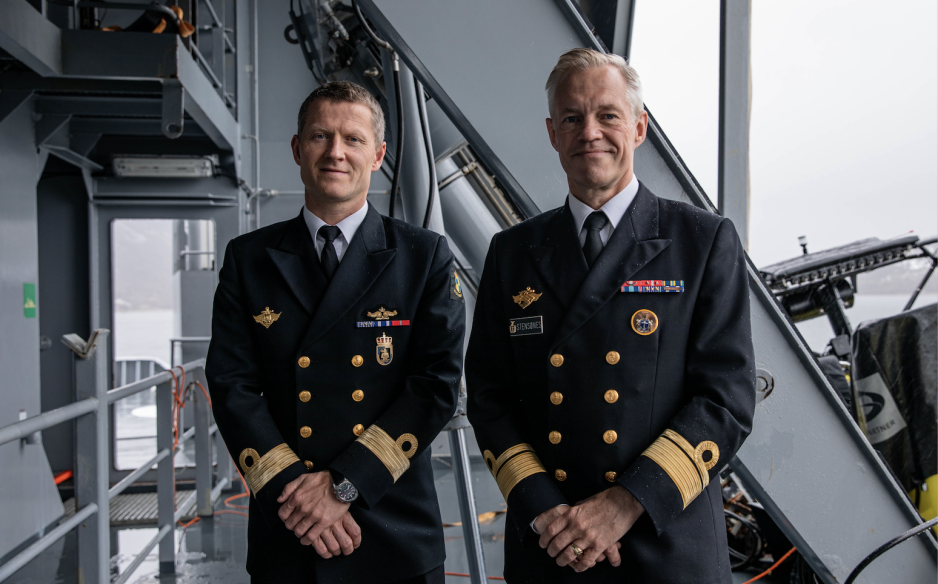
The Norwegian Navy and the Norwegian Intelligence Service (NIS) cooperate to develop situational awareness along the country's coast and ocean areas. Oliver Berdal was appointed Rear Admiral and Chief of the Navy in October. Here he is pictured in May 2020 as Chief of the Coast Guard with the then Navy Chief, Rear Admiral Nils Andreas Stensønes. Later that year, Stensønes became Vice Admiral and Chief of NIS. (Photo: Helene Synes / the Norwegian Armed Forces)
Sea control
In his professional military advice of June 2023, Norway's Chief of Defense General Eirik Kristoffersen wrote that if the economic framework for the development of the Norwegian Armed Forces were to be based on the current long-term plan, it would require cuts in the Navy's structure, among other things.
In the event of structural naval cutbacks, the Armed Forces will not be able to meet an ambition for sea control, and must focus on denial, he pointed out.
Now we know the country's government is proposing to strengthen the defense sector by NOK 600 billion over 12 years, with the most significant investments in the Navy. If the proposal is adopted by parliament, the financial framework for defense will be 83 percent higher in 2036 compared to the current budget level.
The proposed strengthening will provide even better control of activity over and under water.
With the proposed reinforcement, will the Norwegian Navy achieve the ambition of sea control in the North Sea and the Norwegian Sea in collaboration with allies?
"Having complete control of everything at all times is demanding. Norway has a good overview of the activities in our areas of interest. The proposed strengthening of the Navy, combined with the Air Force's maritime patrol aircraft, drones, and not least Norway's very capable Intelligence Service, will provide even better control of activity over and under water."
"In addition, the increasingly stronger cooperation with our allies will further advance our ability to ensure good situational awareness in the North Sea and the Norwegian Sea," he adds.
Central naval terms and relevant training
– Sea control, or command of the sea, refers to control of all military and civilian activity in a sea area.
– Sea denial involves denying the counterpart control over a sea area without having control yourself. In other words, it is a less ambitious objective.
– During the closely integrated military exercises Joint Warrior and Nordic Response this winter, Norwegian and allied forces practiced establishing sea control in the North Sea and the Norwegian Sea, as well as sea denial in the Barents Sea. Such a grip on the situation at sea is essential for the reception of allied reinforcements in the North.
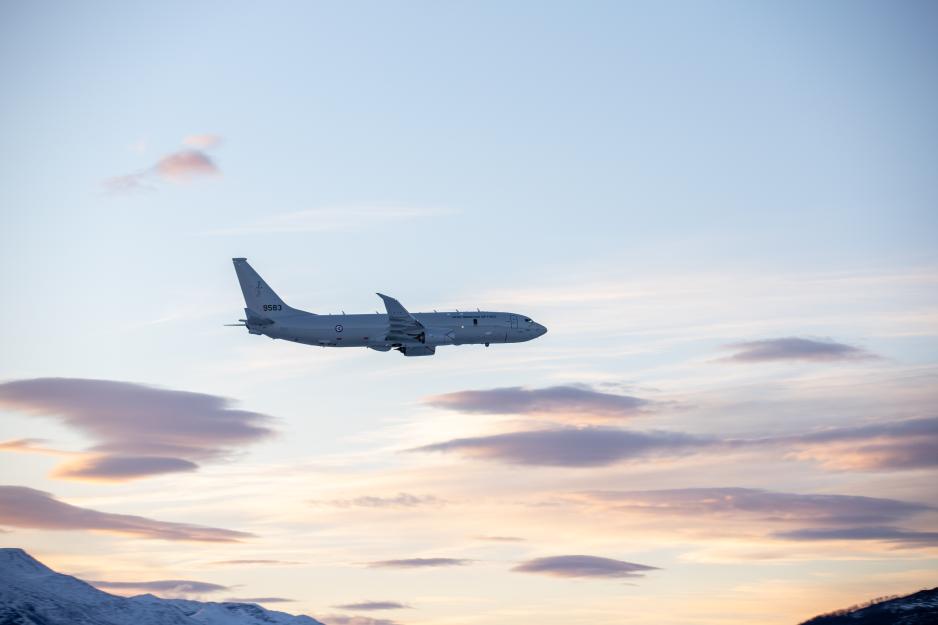
One of Norway's new Poseidon P-8 maritime patrol aircraft heading out on a mission from Evenes Air Station in Nordland, Northern Norway, the main base for these aircraft. The fifth and final aircraft is expected to be delivered in 2026. For increased operative effect, the government proposes acquiring a P-8 simulator in a new long-term defense plan. (Photo: Tiril Haslestad / the Norwegian Armed Forces)
The Defense Commission's assessment
In the spring of 2023, the Norwegian Defense Commission strongly recommended a broad maritime investment.
Norway is facing a particular challenge at sea in the next 10 to 20 years, the commission writes in its report and points to the following:
- "Norway's strategic interests, advantages, and vulnerabilities assessed against the external challenges point in the maritime direction. A more dangerous and unpredictable Russia, the US priority of China, and Finnish and Swedish accession to NATO emphasize this. The sea routes are critical for ensuring supply lines to the Nordic peninsula."
- "Norway's petroleum and energy production at sea has become even more critical to European energy security. The opening of ocean areas and sea routes in the Arctic, as well as the development of outer space, sets further requirements of Norwegian military presence in the High North."
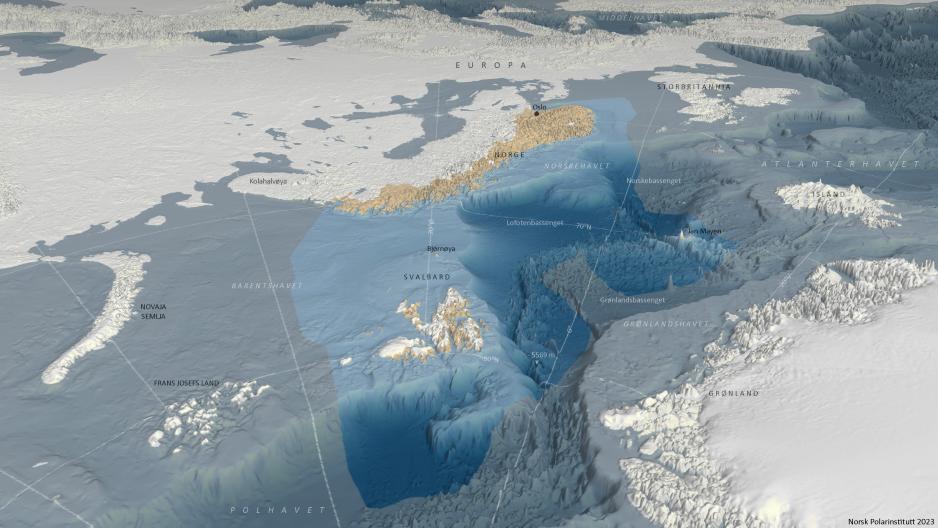
Norway's major coast and ocean areas, including the seabed and the Svalbard archipelago. (Map: The Norwegian Polar Institute 2023)
- "The prospects of stability and low tension in Norway's vicinity areas are worse than they have been for a long time, and the Norwegian value creation in the same area has never been greater. Norway's location affects Norwegian security and strategic room for action in a Western strategic direction. This is due to the proximity to the Russia's Kola Peninsula, as well as a long coastline toward the Barents Sea and the ocean areas for Russian power projection."
- "Both Russian and allied strategic interest in Norway and its vicinity is directly or indirectly linked to the maritime domain. The gravity of the security situation makes prevention and deterrence more important to avoid confrontation, conflict, and, in the worst case, war."
- "For Norway, much of this prevention and deterrence will build on a joint operative approach with particular focus on the maritime, from sea to coast," the Defense Commission assesses.



